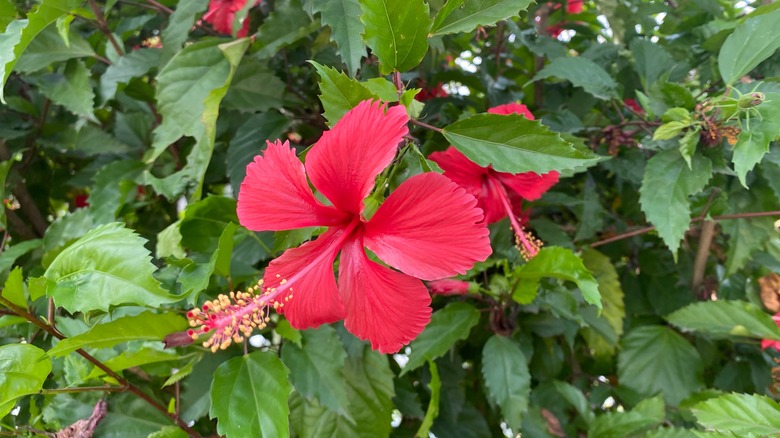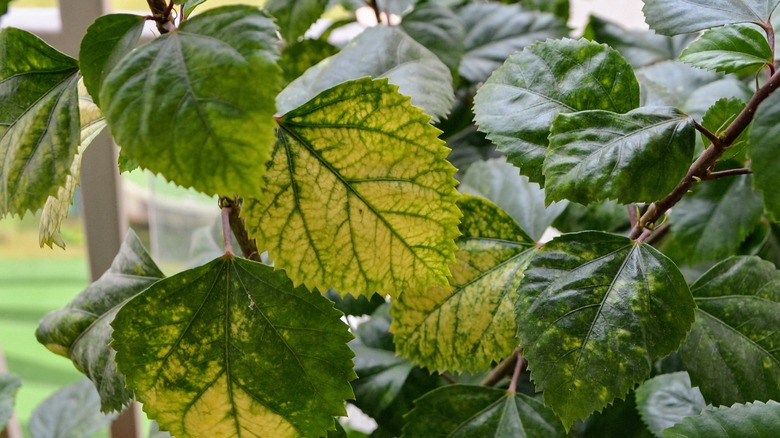The Reasons Your Hibiscus Plant's Leaves Are Turning Yellow (& How To Fix It)
Hibiscus, the glamour queen of the garden, unfurls its short-lived blooms in variations of red, yellow, and white. While the single or double flowers usually drop after just one day, hibiscus plants continue to produce new blooms for months, attracting pollinators like butterflies and hummingbirds. If your garden stunners develop yellow leaves, then sudden changes in temperature or soil moisture, overwatering, lack of fertilizer, or insect infestation are the likely culprits. Both hardy hibiscus (which can overwinter outdoors in cooler climates) and tropical hibiscus (which can't) react to these conditions with yellowing leaves.
Hibiscus are fairly easy plants to grow, and your best defense against yellowing leaves on your plants is providing them with the healthiest growing conditions possible. While hardy hibiscus craves full sun and thrives in well-drained, moist soil, it will tolerate various soil conditions from moist to dry. It is generally hardy in zones 4 to 9. If you're growing tropical hibiscus in containers, use a mixture of potting soil, peat moss, and vermiculite. Indoor plants need daytime temperatures above 55 degrees Fahrenheit to flourish. Keep the soil moist — if the leaves droop, the plants may need water. Use a balanced hibiscus fertilizer for beautiful blooms, and prune the plants in late winter to promote growth.
How to fix yellow hibiscus leaves
Yellowing leaves are also known as chlorosis, a condition caused by a lack of chlorophyll. Hibiscus prefers a slightly acidic soil, with an ideal pH between 6.5 and 6.8. You can measure the pH of your soil with a test kit, or you can send it to your local extension office. The test will also provide you with the amounts of nutrients in the soil, like magnesium and nitrogen. Adjust the pH and provide the missing nutrients to prevent chlorosis.
Too much or too little water can also cause yellowing leaves. The amount of water your plant needs depends on which variety you're growing, but in general, hibiscus needs moist soil that doesn't dry out, and new plants need extra water until they're established. Container-grown hibiscus should be kept in a pot with good drainage. In the winter, allow indoor plants to dry out a little between waterings. Indoor plants should be placed in a spot that's not subject to sudden temperature changes.
Check the undersides of the leaves for aphids, tiny insects that suck on the plant's sap. While they typically won't kill your hibiscus, they can cause the leaves to turn yellow in large enough numbers. Fortunately, you don't need heavy-duty herbicides to handle an aphid infestation. Spraying the plants with water from the hose (or the sink sprayer if your hibiscus lives indoors) will knock them off. Make sure to get the undersides of the leaves. If that doesn't work, try one of the horticultural soaps available for pest control. Introducing predators like wasps can also help control your aphid problem.

